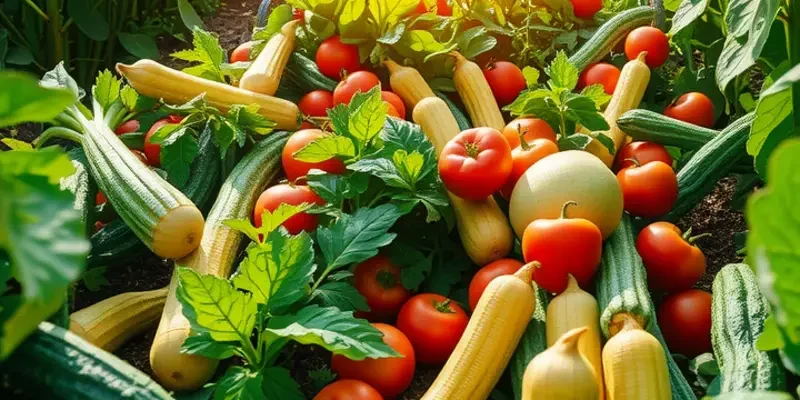Meal preparation can be a game changer for busy individuals and families, saving time and reducing stress during hectic weeks. By streamlining your grocery shopping and cooking processes, you can enjoy nutritious meals without the chaos. This guide focuses on practical frameworks that are easy to implement, allowing everyone—from single professionals to busy families—to devise efficient meal plans that cater to their schedules and preferences.
The Foundation: Embracing Meal Planning

Meal planning serves as the cornerstone of efficient meal preparation. Establishing a weekly plan can significantly reduce the daily stress of deciding what to eat. It creates a roadmap, helping you strategize cooking and grocery shopping effectively.
Start by outlining a weekly menu that caters to your lifestyle. Consider your weekly commitments and identify evenings when you might have more time to cook versus those when you’re pressed for time. For days with limited availability, embrace minimal-prep dinner ideas (here’s a resource) to help.
Once you’ve delineated your schedule, the next step is creating a structured shopping list. Organize it by aisles or sections of the grocery store to streamline your trip. This prevents unnecessary wandering and helps you stay focused on purchasing only the essentials.
Include versatile ingredients that can be used in multiple meals. Items like grains, proteins, and vegetables often serve as the backbone of various dishes. By rotating ingredients, you can create different meals without overwhelm. For example, roasted vegetables can complement a grain bowl, serve as a side dish, or top a salad. This approach minimizes waste and enhances creativity in the kitchen.
Batch cooking is another valuable strategy. Dedicating a couple of hours to prepare basics like roasted chicken, quinoa, or a versatile sauce can save time during the week. Once these staples are ready, assembling meals becomes much quicker.
Don’t forget to factor in leftovers. Plan for meals that can double as lunch the next day or be revamped with a new flavor profile. This not only saves time but also makes the best use of your ingredients.
Adjust and perfect your plan weekly, as meal planning is a flexible strategy that should adapt and evolve with your preferences and schedule. It’s essential to remain open to trying new recipes or adjusting quantities based on your week.
Consider adopting a digital or physical meal calendar to keep your plan visible. This serves as a constant reminder and can motivate you to stick with your routine. With consistent practice, meal planning becomes second nature, ultimately transforming your meal prep into a seamless part of your life.
Smart Meal Prep: Batch Cooking and Versatile Recipes

Batch cooking serves as a cornerstone strategy for efficient meal prep, saving both time and energy. By dedicating a few hours to cooking on the weekend, you set yourself up for more streamlined weeks. Imagine having a range of meals ready to enjoy without the daily hustle of cooking.
The essence of batch cooking lies in creating versatile base components that can be recombined throughout the week. Think grains, proteins, and roasted vegetables. Prepare these building blocks in large quantities and use them to craft diverse meals. For example, cook a big batch of quinoa or brown rice. These grains serve as the foundation for bowls, salads, or even stir-fries. Proteins like chicken, tofu, or beans can be pre-cooked, seasoned, and divided into meal-sized portions for easy inclusion in wraps, tacos, and more.
Another key to smart meal prep is mastering simple, adaptable recipes. Choose recipes that easily lend themselves to variations. A basic tomato sauce can transform from pasta topping to pizza base or even a dipping sauce with minimal adjustments. Similarly, a black bean chili can become a topping for nachos or the filling for a burrito when necessary. These kinds of adaptable recipes ensure that meals never feel repetitive yet remain quick to prepare.
Exploring global cuisines can also provide fresh ideas for versatile cooking. Experiment with ingredients from different culinary traditions to inspire new meals. This article on culinary influences explores how trade has shaped our food landscape, offering insights into integrating diverse flavors into your meal prep routine.
Storage plays an essential role in batch cooking. Use airtight containers to keep ingredients fresh and easily accessible. Consider labeling each with the date to track freshness. Efficient storage not only helps with organization but also reduces food waste. This is crucial for maintaining a sustainable kitchen environment.
Additionally, cooking in large quantities allows for seamless incorporation of meal prepping into diverse dietary practices. This flexibility accommodates plant-based eating, gluten-free diets, or any other specific preferences. For instance, a base of roasted vegetables suits omnivores and vegetarians alike. Add them to omelets, blend into a soup, or enjoy as a simple side dish.
Batch cooking and versatile recipes require an initial investment of time but yield exponential returns. With thoughtful planning, you can enjoy varied, nutritious meals throughout the week without the daily grind of recipe wrangling. Through the power of preparation, smart meal prep connects seamlessly with a busy lifestyle, elevating both your mealtime satisfaction and dietary diversity.
Final words
Successfully managing meal prep doesn’t have to be overwhelming. By adopting structured meal planning and efficient batch cooking techniques, busy individuals and families can enjoy delicious, healthy meals without the hassle. Start small by implementing one or two strategies from this guide, and gradually build a routine that works for you. Remember, the goal is to simplify and enjoy your meals while making healthy choices each day. With a little organization, meal prep can become an enjoyable and rewarding part of your week.







